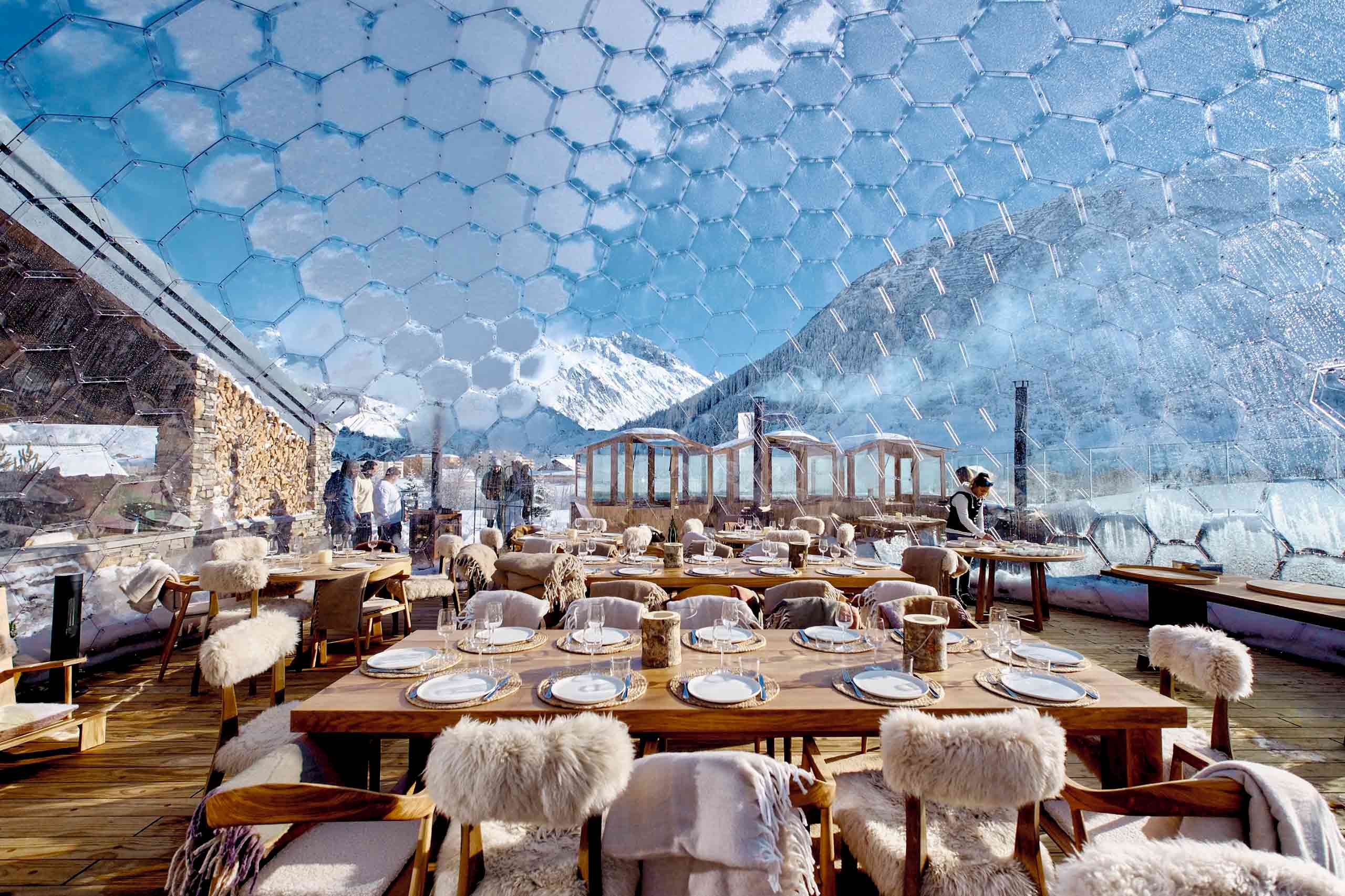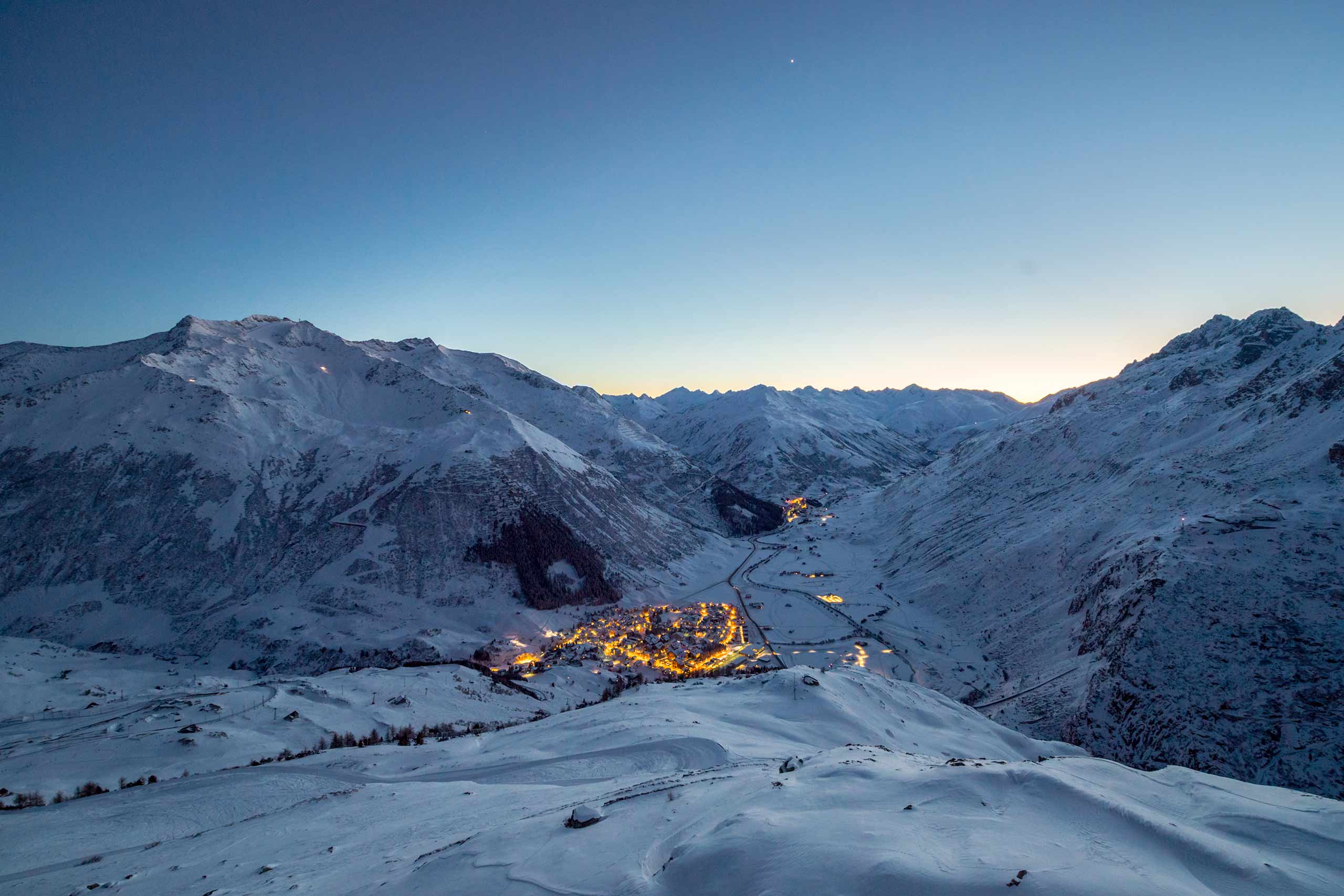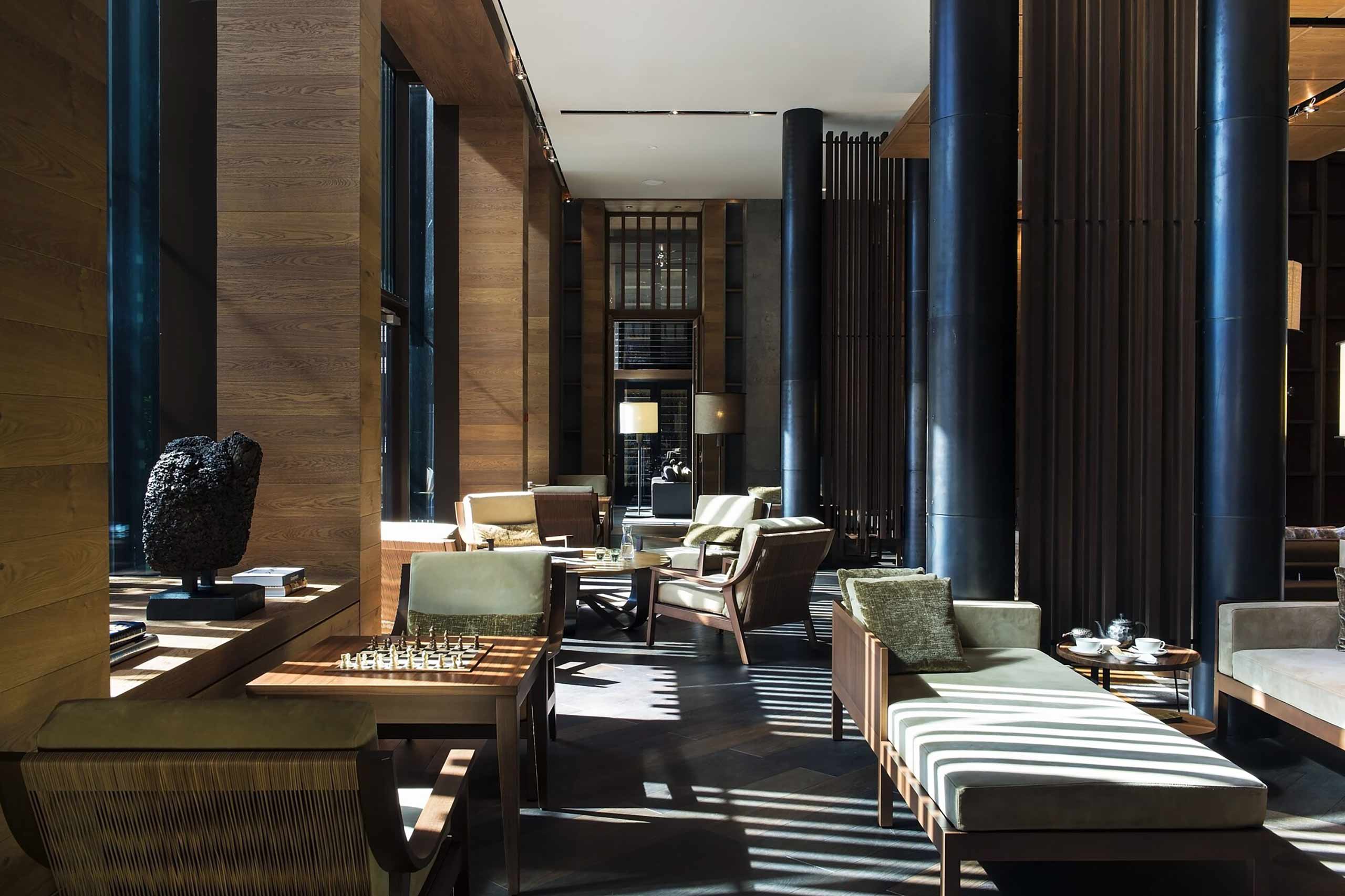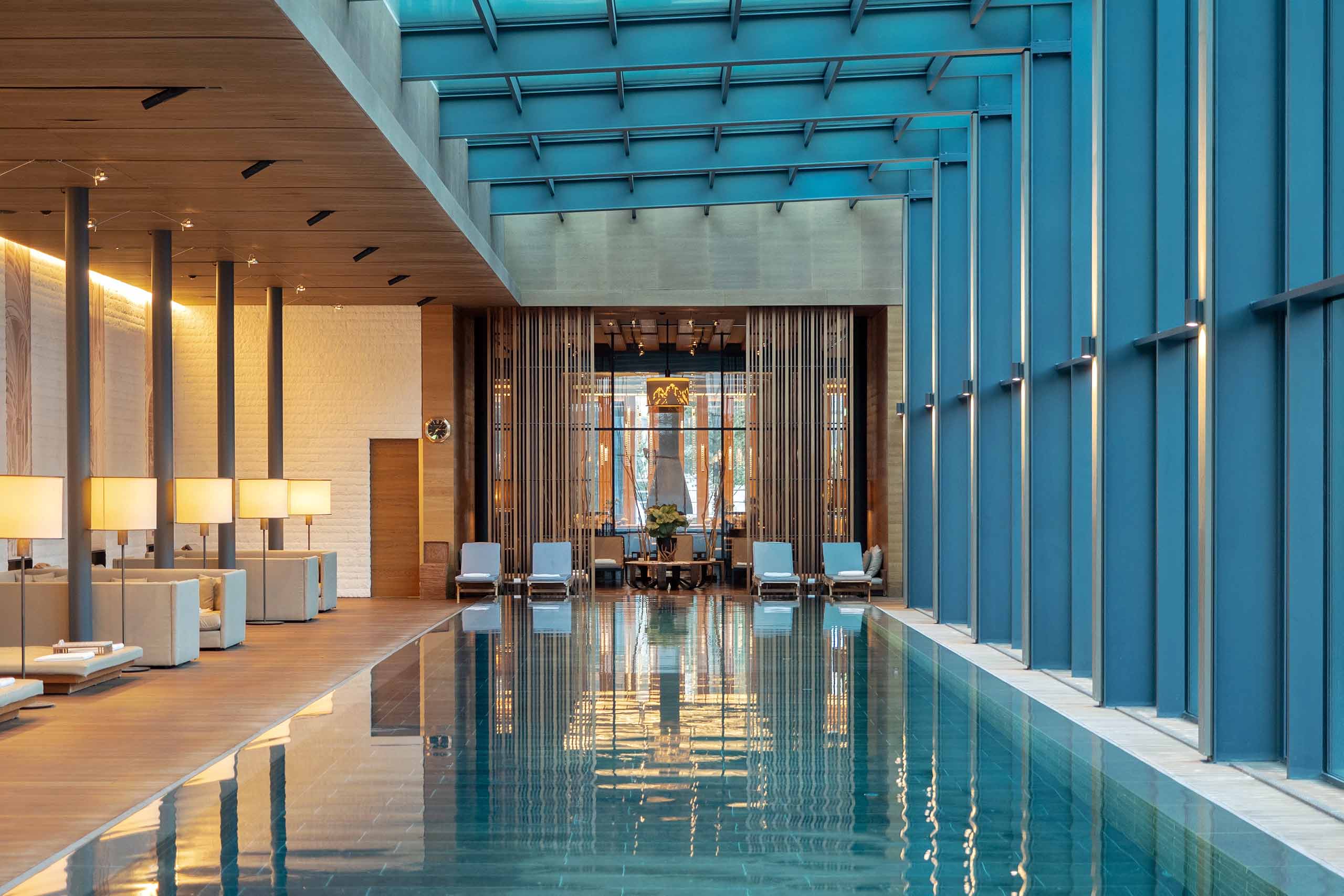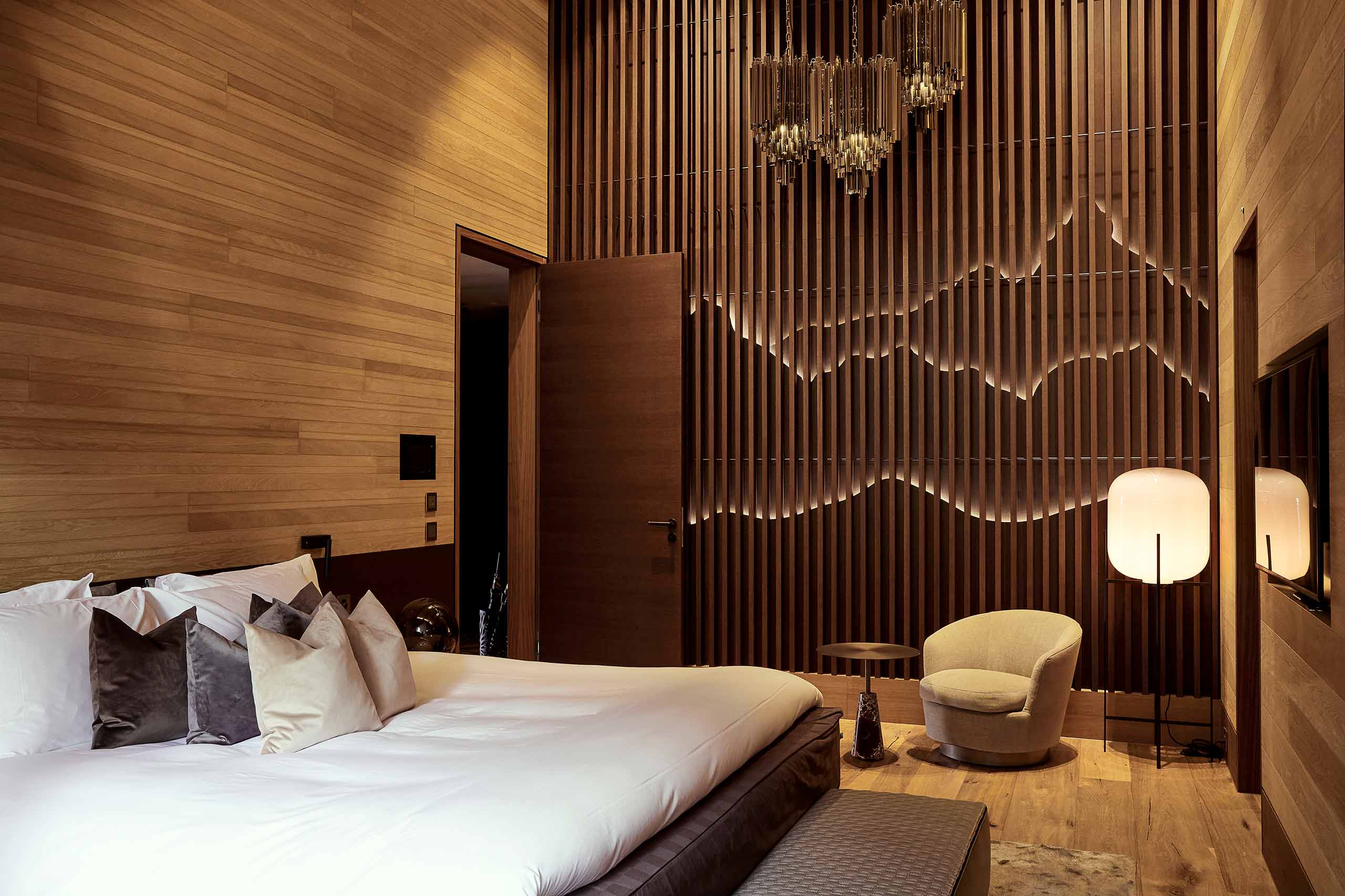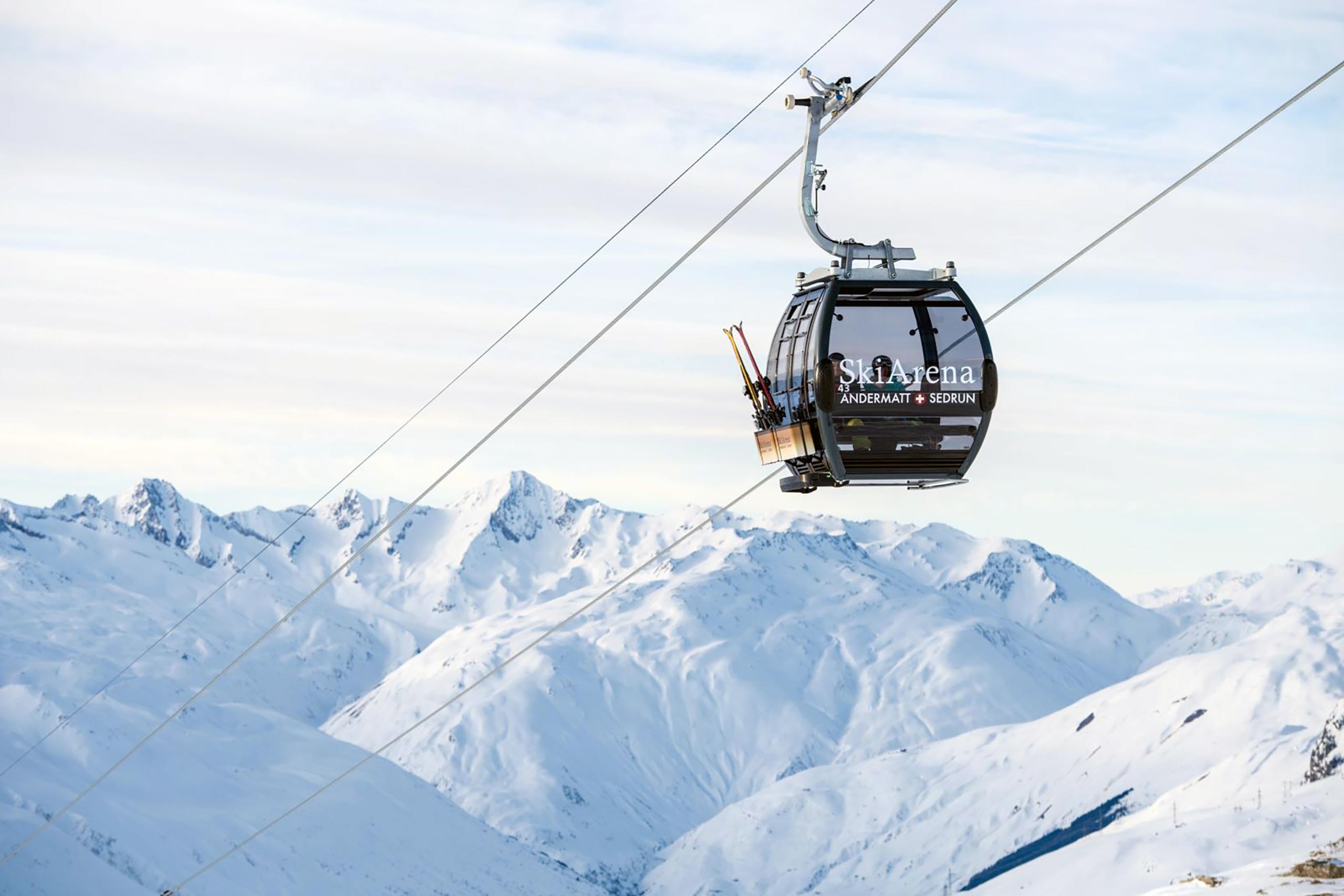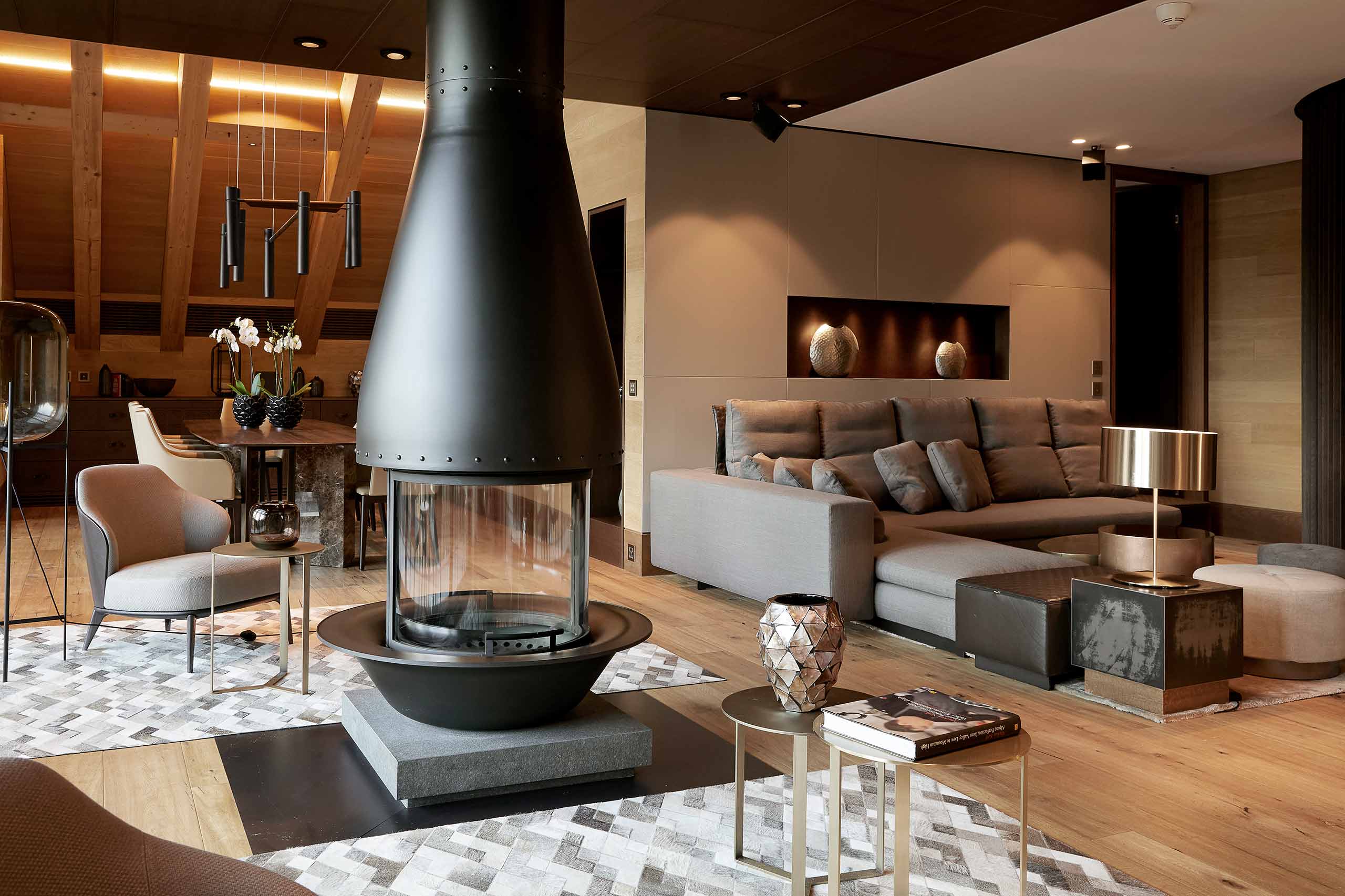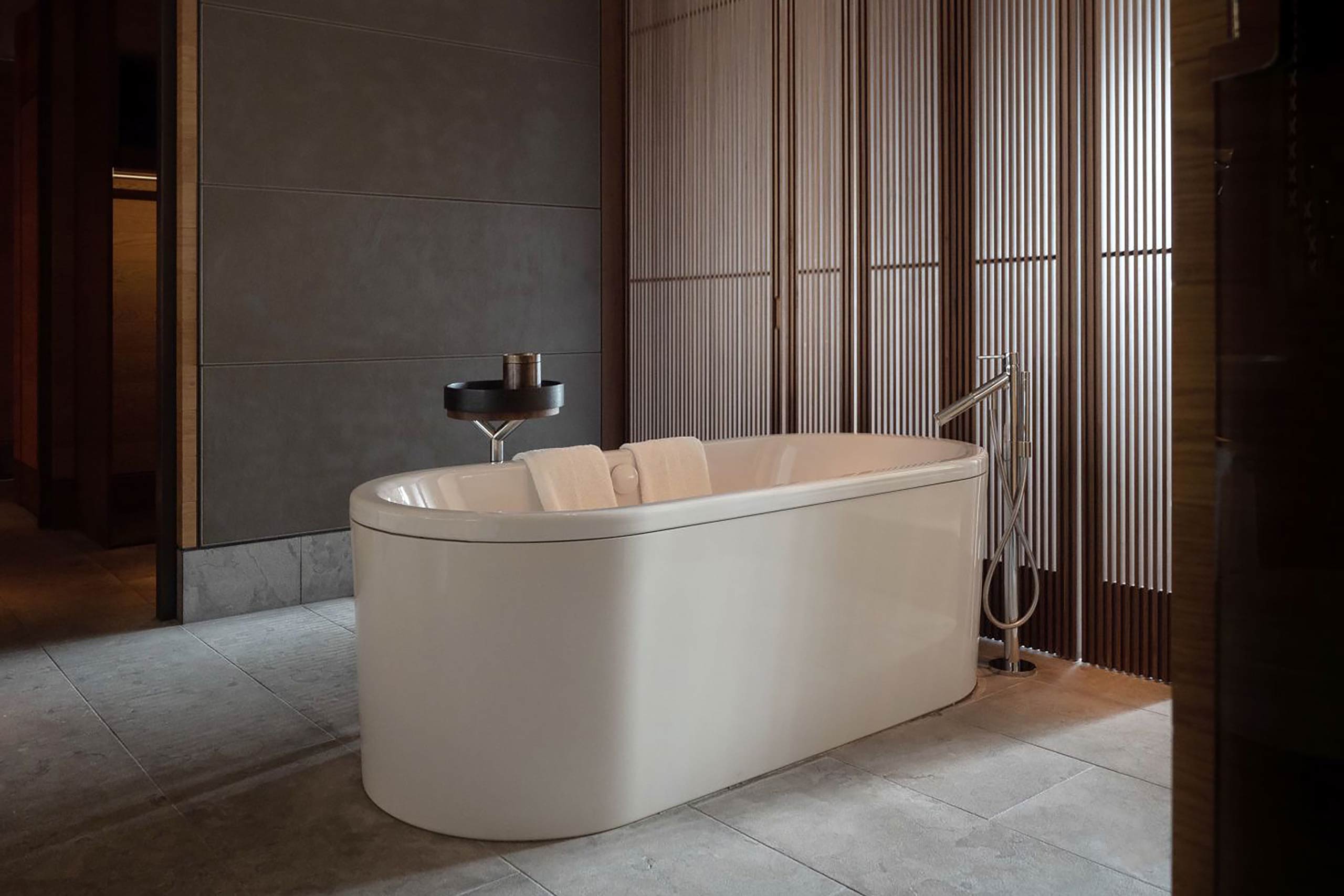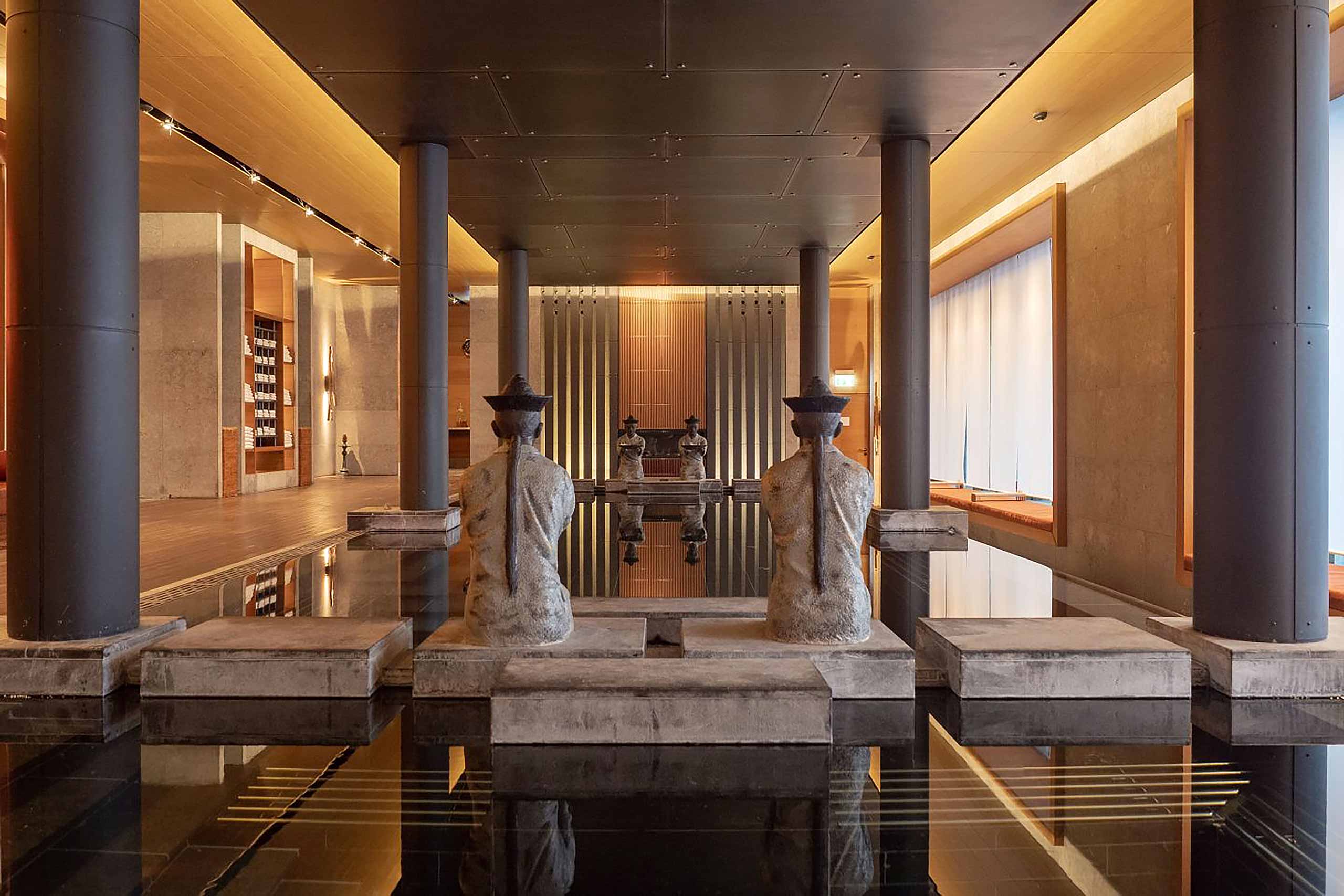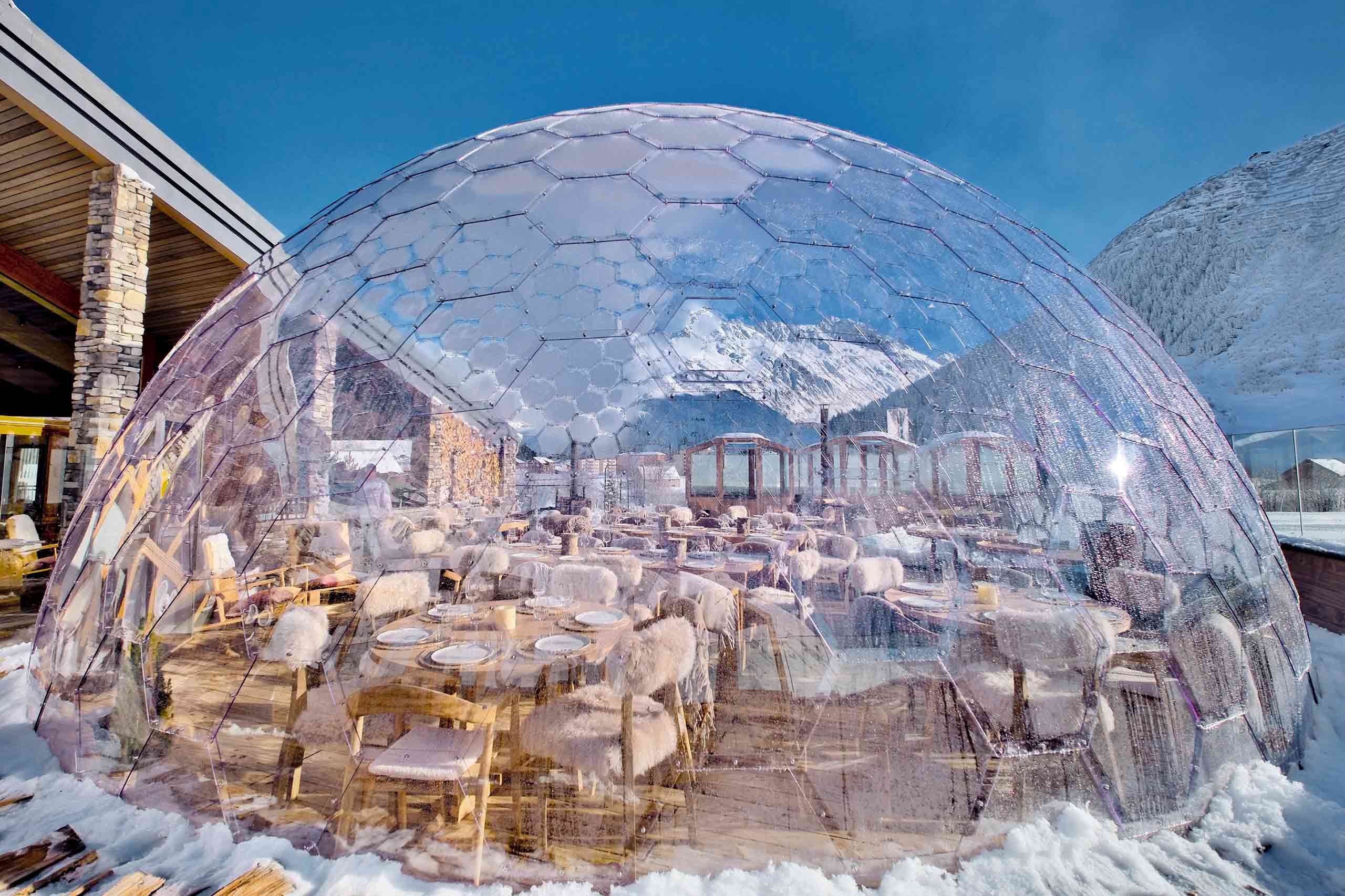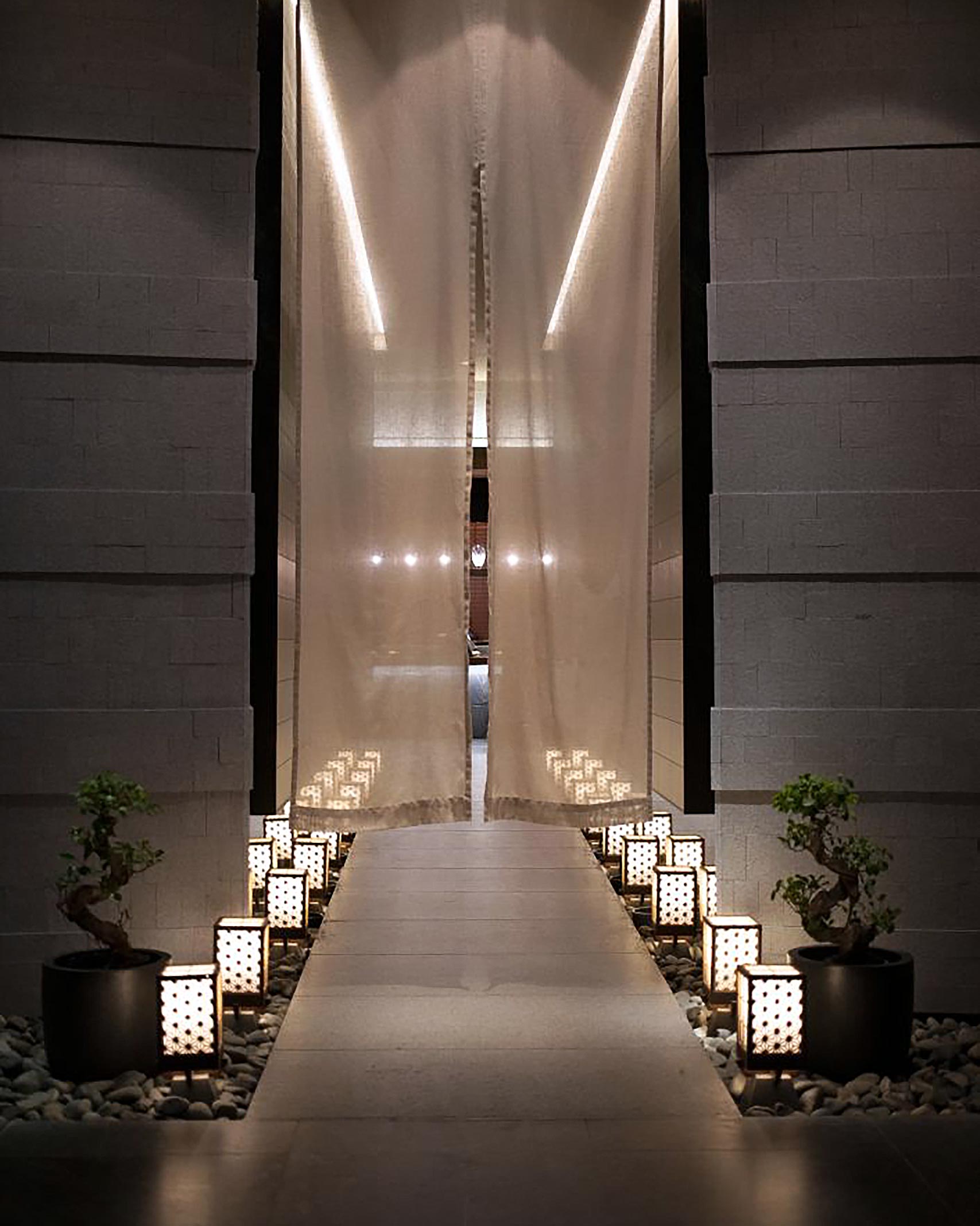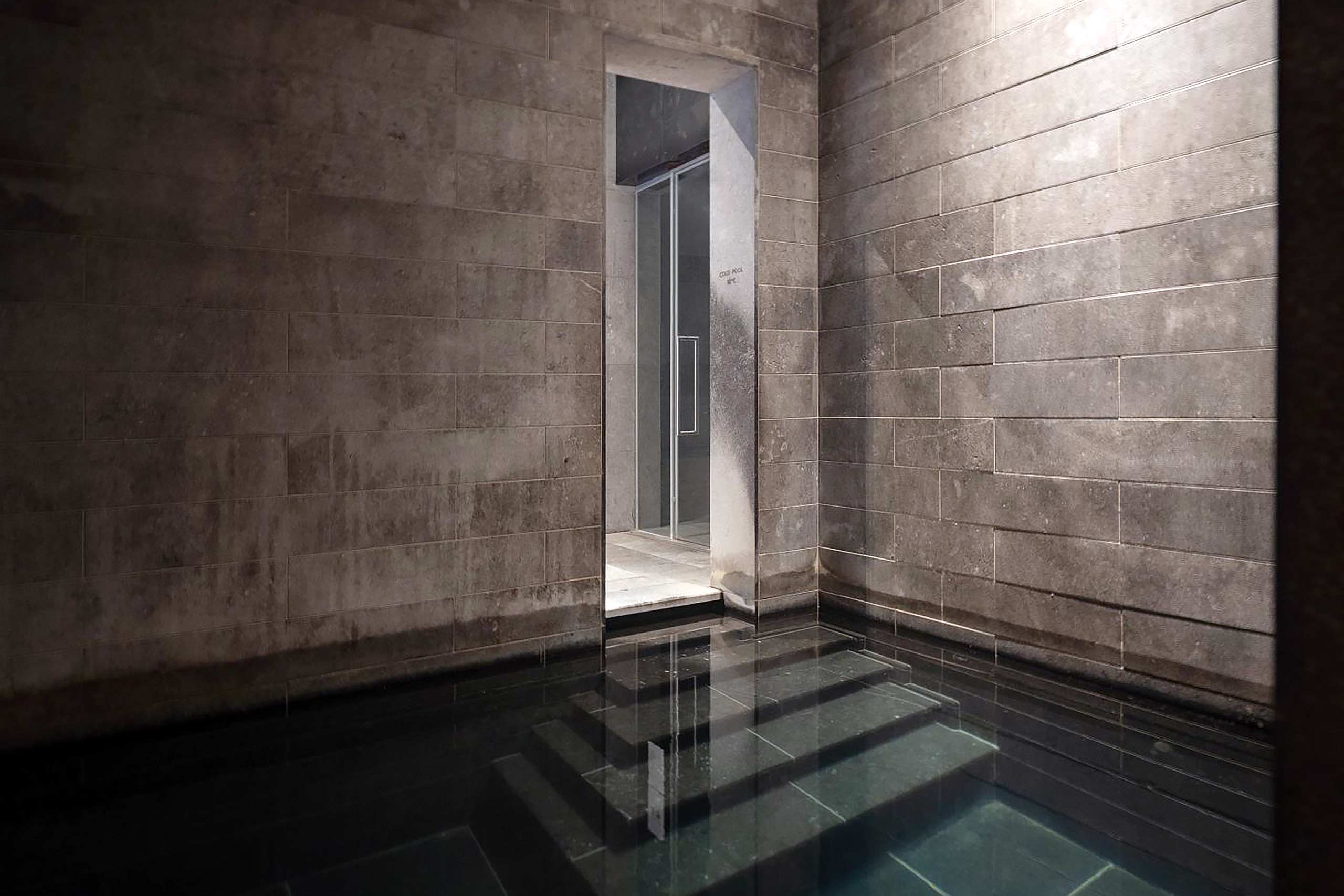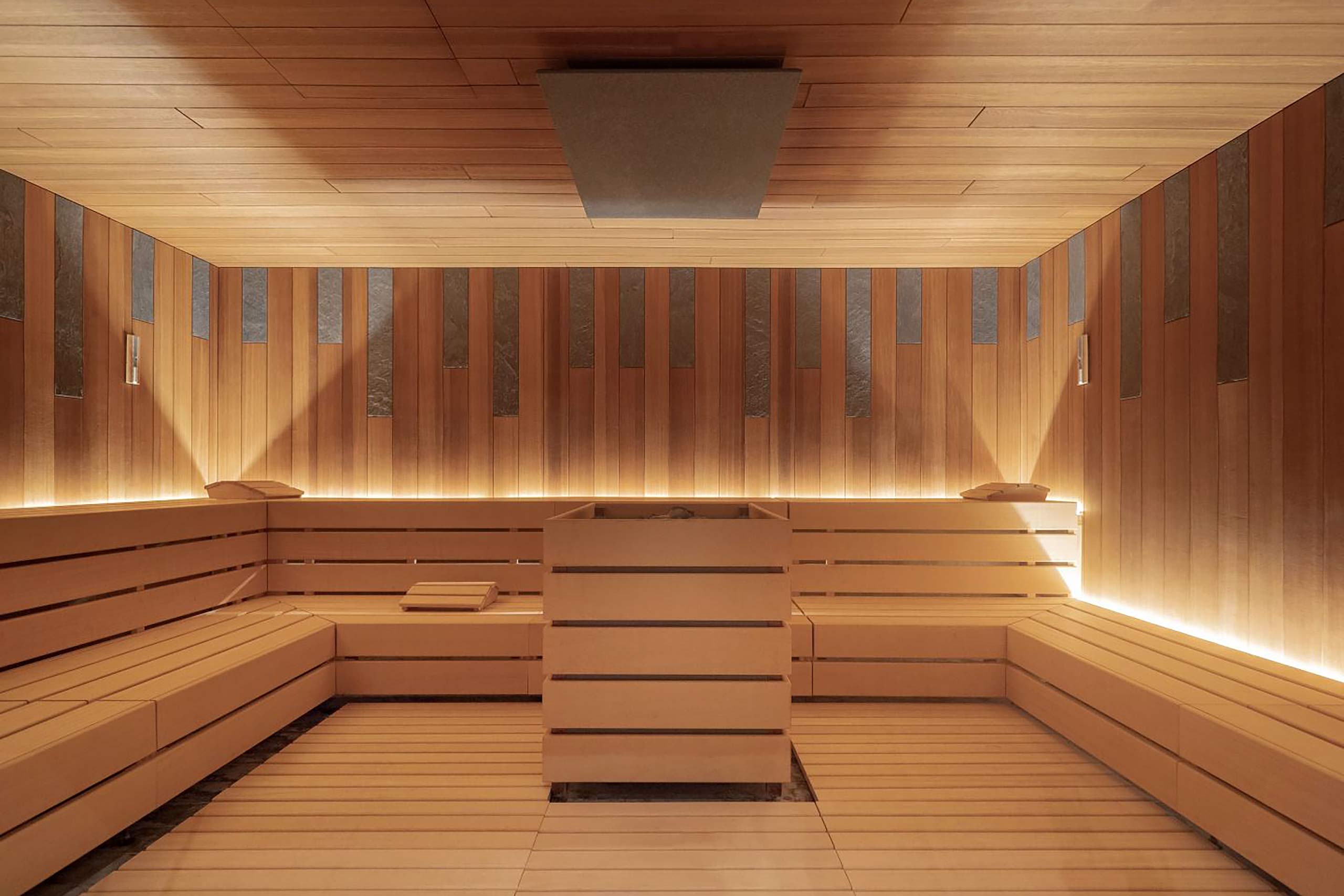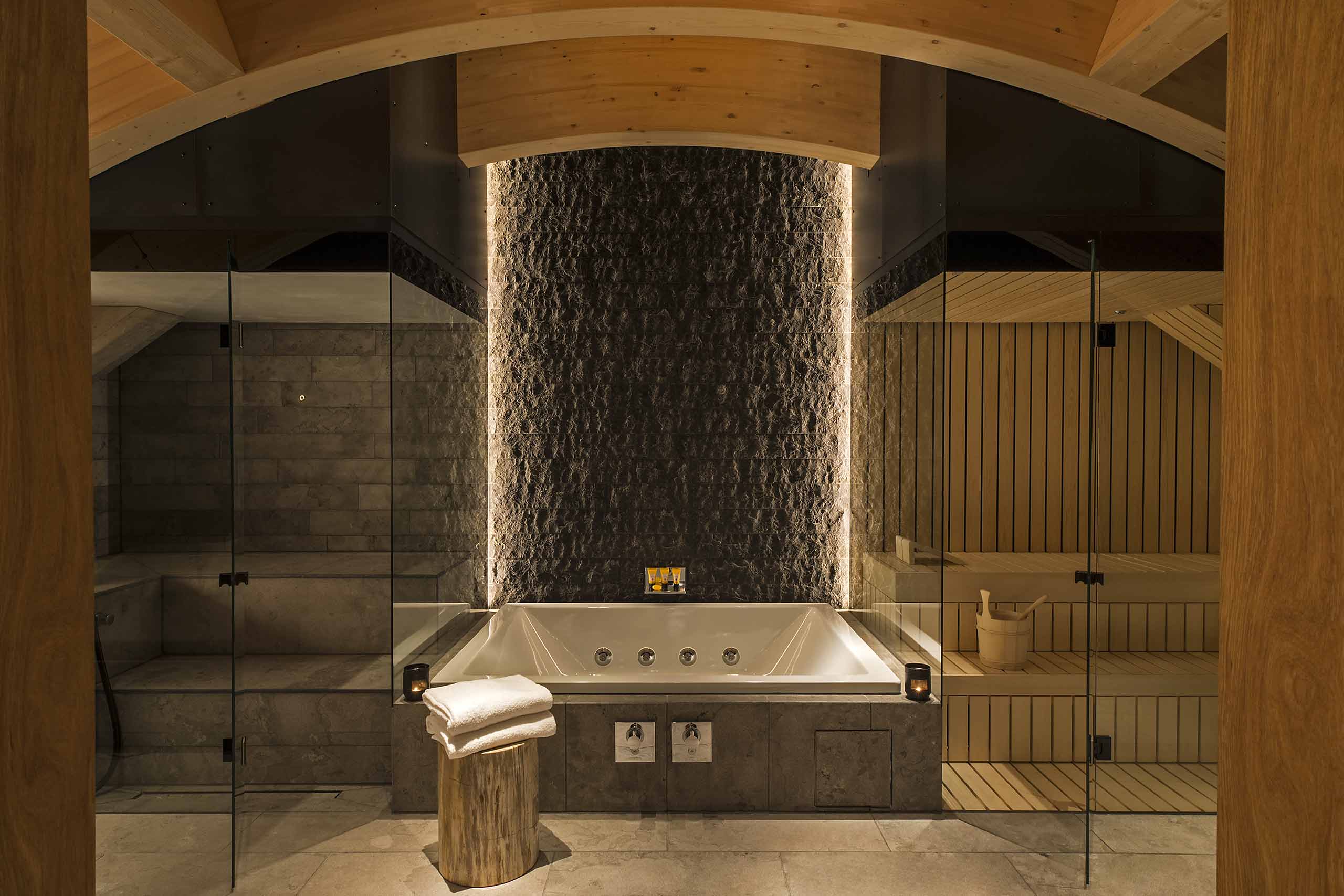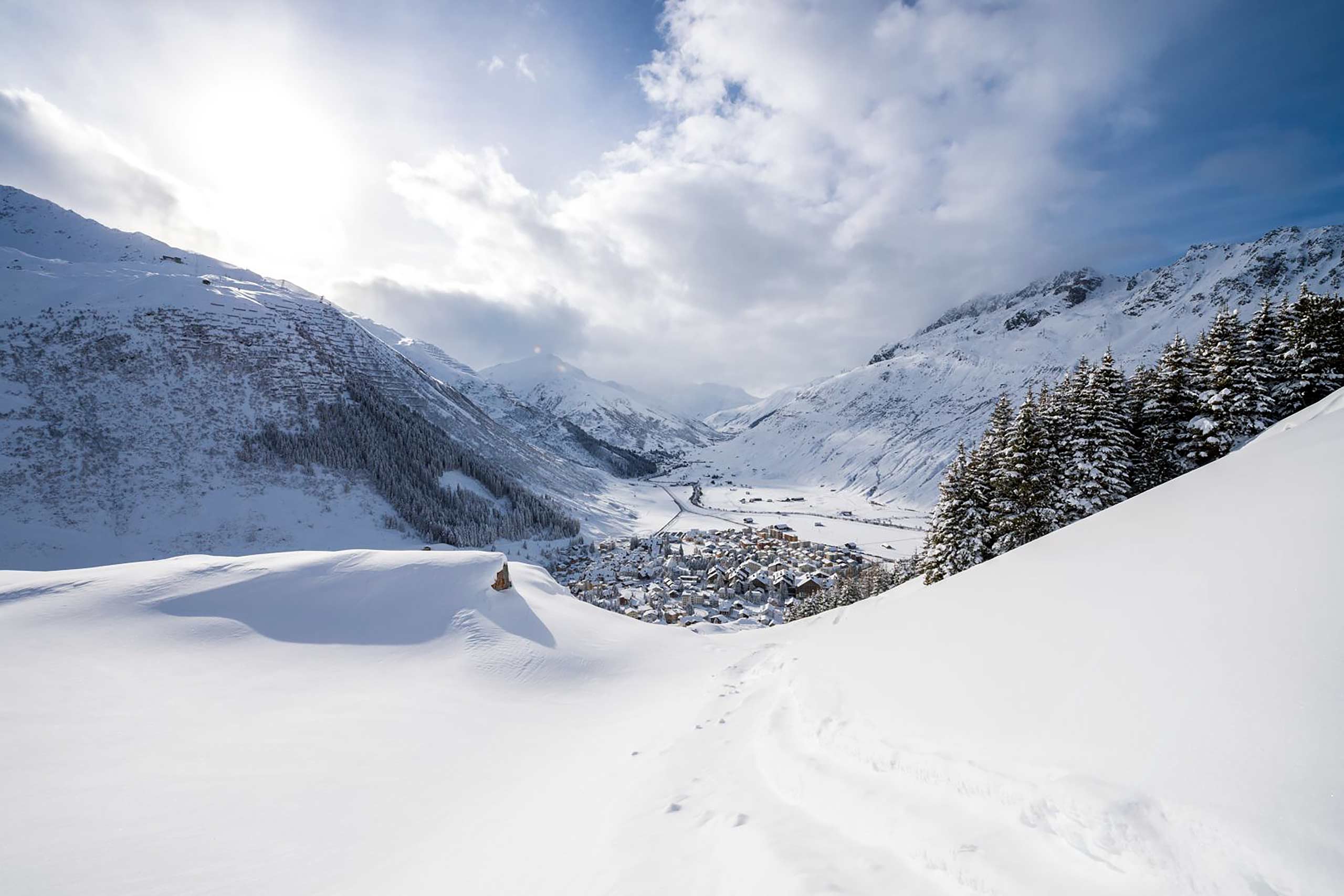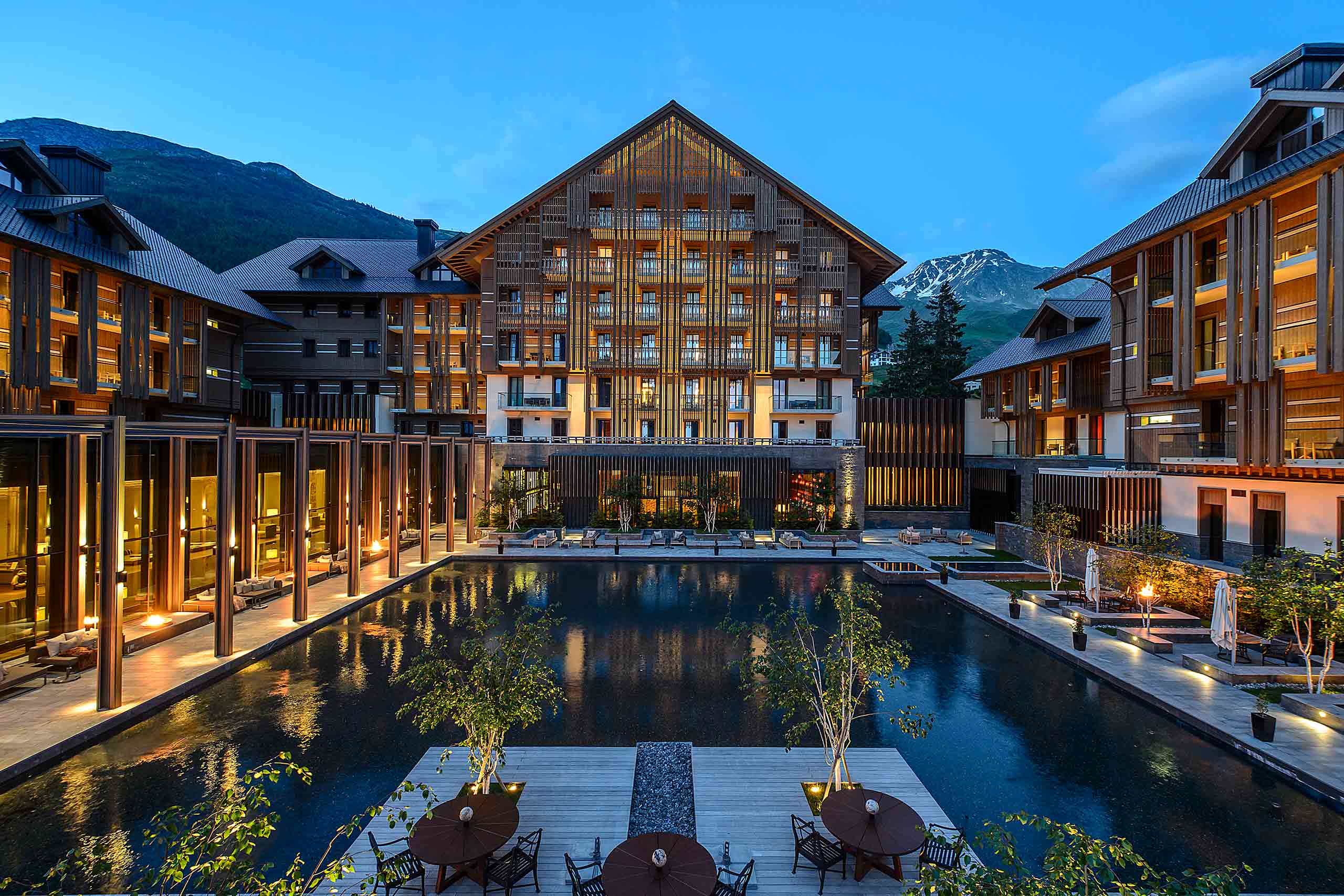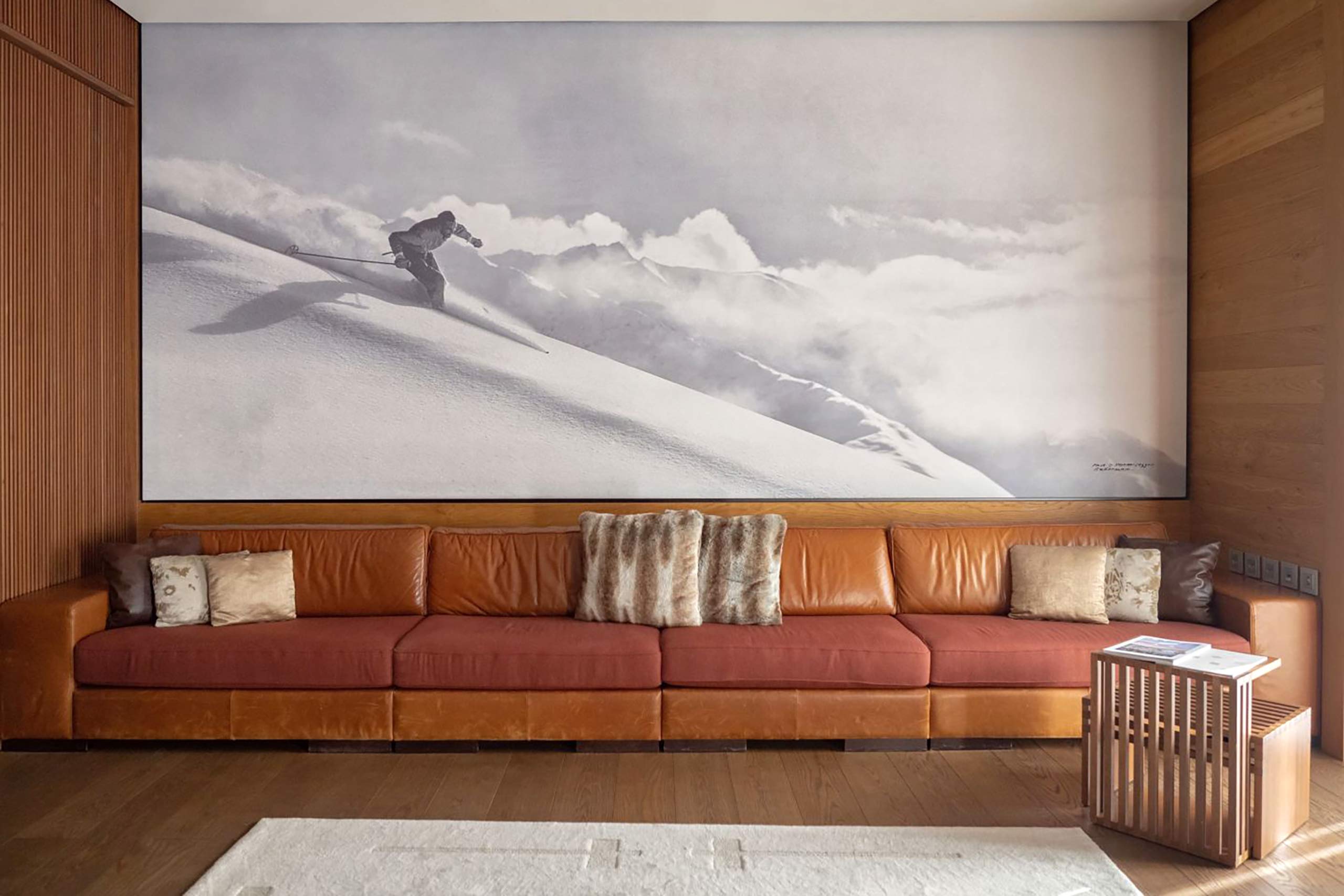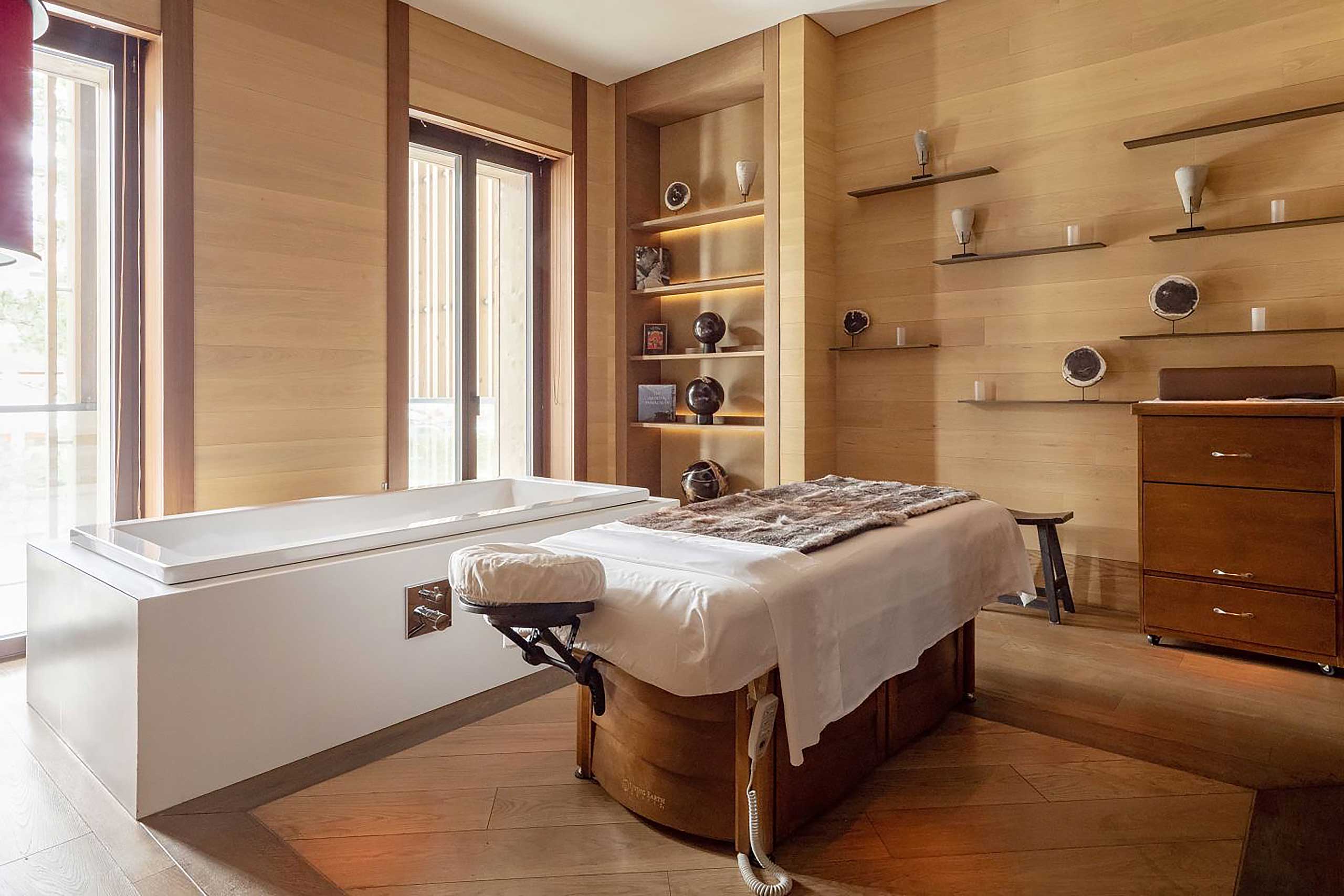Long cherished by intrepid downhillers for its rugged terrain and exceptional snow record, Andermatt has a unique history that has enabled it to bend the tradition-bound rules of chocolate-box ski-resort development and become a worldly beacon of hedonism and indulgence.
We’d only been in Andermatt an hour, having arrived in the comfort of Switzerland’s first-class trains from nearby Zurich, yet I still sank gratefully into the fur-lined armchair next to the Cotton Club’s glass-encased, wood-burning fire. My host, Norway’s flamboyant Christian Marstrander, placed an espresso martini in front of me before dropping the keys to his vintage Porsche 911 next to it. “You’d best take her for a spin before the sun goes down,” he advised with a mischievous grin.
Deciding against ‘one for the road’, I grabbed the keys and burnt rubber on the winding Alpine roads as the deep-blue sky transformed into a lurid blend of pink, lilac, orange and yellow above me. Who knew that ragging a Porsche in the Swiss Alps – quite literally following in the tyre tracks of Sean Connery’s silver Aston Martin in the famous Goldfinger car-chase scene – was the perfect antidote to a day’s travel. I returned, exhilarated, for my martini – to find it already quaffed by my partner.
A sumptuous blend of Mediterranean beach chic and Alpine hygge (think tactile cream fabrics, stripped-pine furniture and monochrome mountain photographs), the new venue is the hottest spot in Andermatt, and arguably all the Alps, for lunch and après-ski, which segue effortlessly through to dinner and cocktails. A large south-facing terrace is dotted with custom-made timber gondolas, which serve as intimate dining spaces for up to four guests. The main attraction, however, is the 10m (32ft) wide, frameless, transparent geodesic dome (pictured, left), which provides some 100 guests and the club’s resident DJ with a sheltered dining (and dancing) space that remains viscerally connected to the spectacular mountain surroundings.
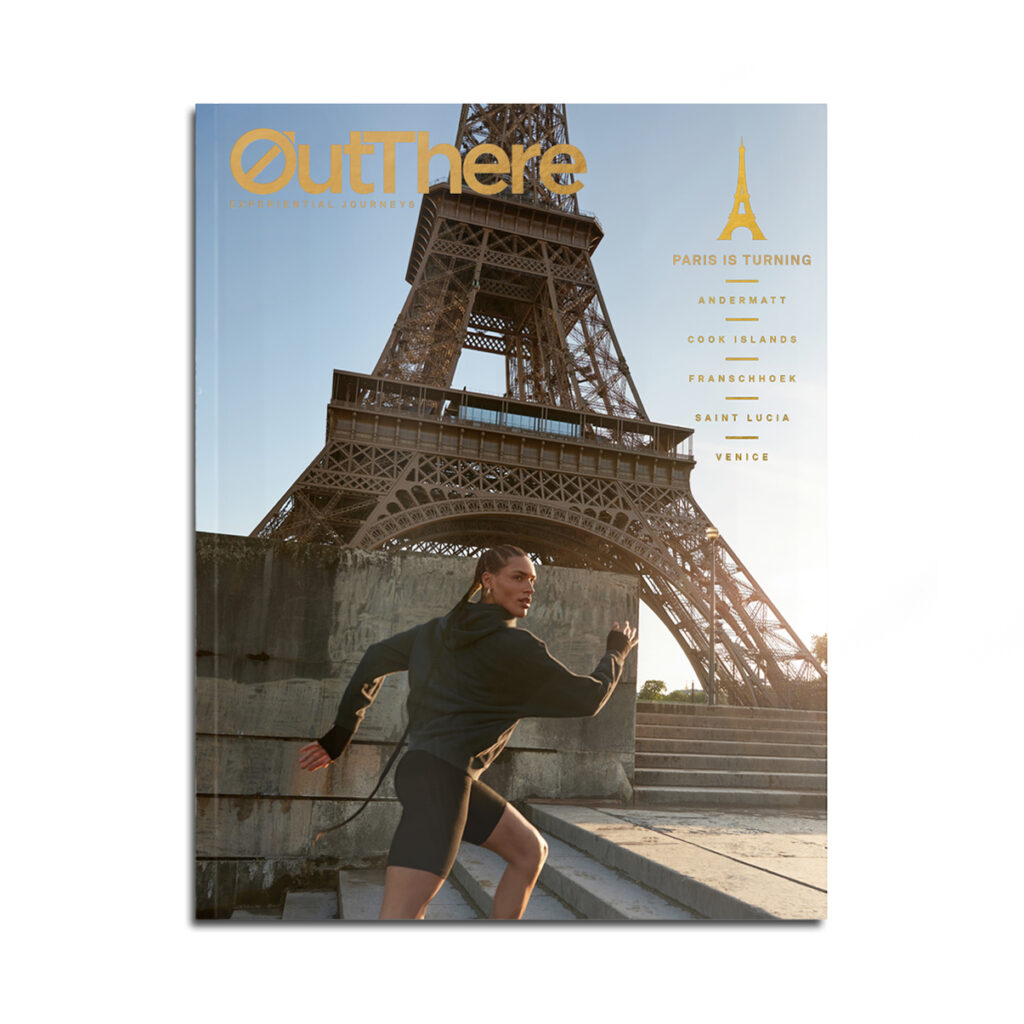
This story first appeared in The Paris is Turning Issue, available in print and digital.
Subscribe today or purchase a back copy via our online shop.
Among fellow guests, all immaculately attired for the snow in cashmere, leather and fur, we feasted on eat-your-heart-out-Nobu sushi prepared with low-key ceremony at our table, washed down with vintage champagne. As DJ Dalibor Dadoff kept the vibe true to Cotton Club’s Ibizan roots with a gently pulsating soundtrack, views of moonlit mountains and stars sealed a truly memorable evening.
A five-minute drive from the Cotton Club brought us back to the indulgent cocoon that is The Chedi Andermatt. It’s likely that this über-luxe Asian-meets-Alpine hotel is the only thing many travellers will so far have heard of in the historically unassuming Andermatt. Indeed, when the hotel opened in December 2013, it represented a pivotal moment for the community, which was balanced precariously on the edge of collapse.
Encircled by mountains and wedged 1,440m (4,700ft) up in the Urseren valley, Switzerland’s geographical heart, Andermatt is a natural crossroads, with mountain passes feeding in from the four points of the compass. First mentioned in writing in 1290 as A der matt (‘at the meadow’), Andermatt was so prone to heavy snowfall and avalanches that 13th-century monks in the area called it ‘the Valley of the Devil’. Undeterred, the community developed over the centuries into a flourishing spa town, hosting intrepid tourists following the Gotthard Pass, including William Tell, Queen Victoria and Russian army general Alexander Suworow, many of whom stayed in the opulent Grand Hotel Bellevue.
Ironically, progress put paid to Andermatt’s growth – the Gotthard Tunnel opened in 1882, delivering year-round access to the remote town while also rendering the scenic Gotthard Pass largely redundant. Tourism dried up and the Swiss Federal Army moved in, using Andermatt as a garrison town from 1885 to 2003.
When the army recruits weren’t building forts and hollowing out underground bunkers, they joined locals skiing and helped to build one of Switzerland’s first ski lifts in 1937 on the gentle slopes of Gütsch mountain, to the east of the town. In 1964 – the same year that Sean Connery burnt up the Furka Pass in his Aston Martin – a new cable car invited skiers to descend the sheer slopes of the 2,961m (9,715ft) high Gemsstock mountain, on Andermatt’s western flank.
Untamed skiing with a bunch of rowdy army recruits was an altogether different experience from quaffing champagne in the rarefied air of Swiss resorts such as St. Moritz and Gstaad, and by the time the army announced it would withdraw from Andermatt in the 1990s, the debt-heavy resort boasted a committed but tiny audience of international ski bums, in thrall to the near 1,500 vertical metres (5,000 vertical feet) of backcountry descents found off the snow-chocked Gemsstock, and the cheap and cheerful hostels dotting the sleepy main street. But the army’s sale of 370 acres of land and withdrawal of 1,500 conscripts and associated income left the town’s future looking bleak.
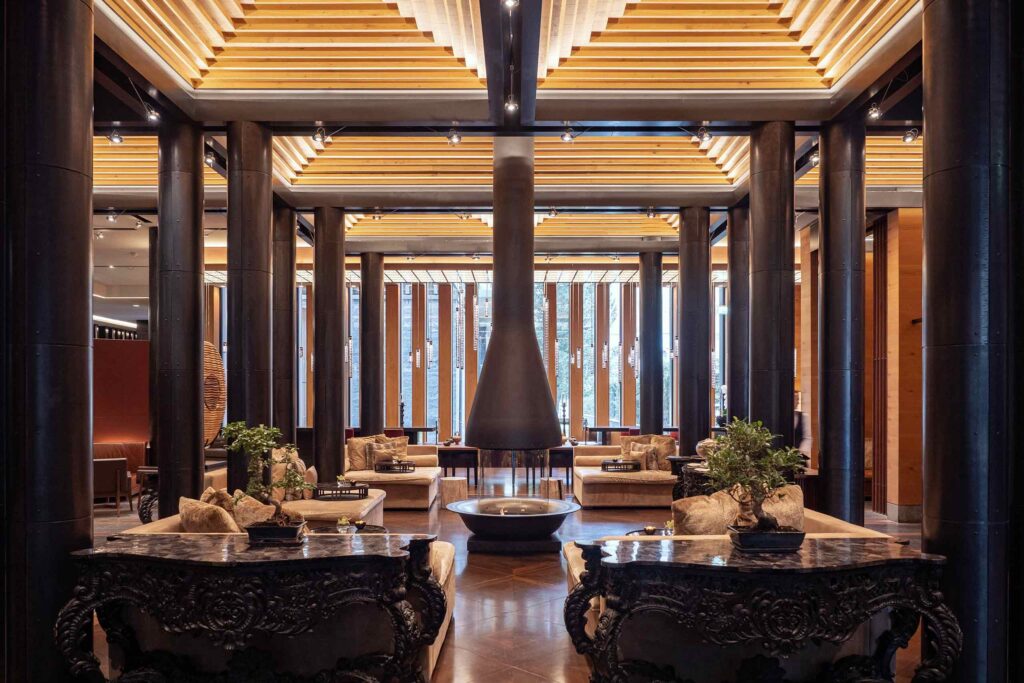

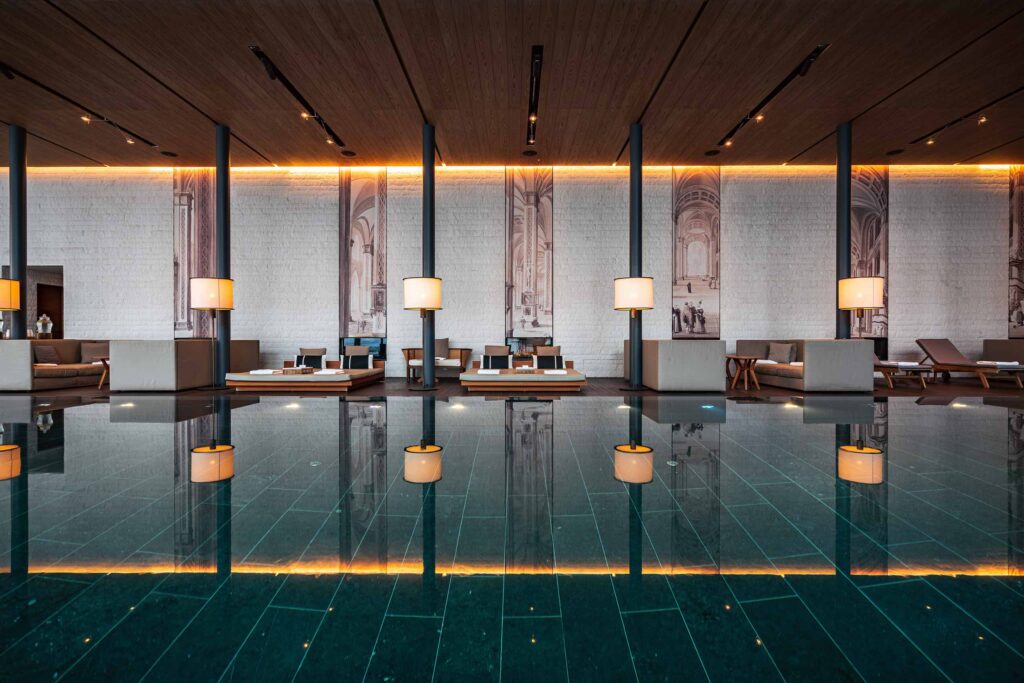
Andermatt’s unlikely saviour came in the form of Egyptian millionaire Samih Sawiris, developer of large-scale integrated international towns such as El Gouna on the Red Sea and The Cove in the UAE. Captivated by Andermatt, Sawiris determined to create his first European resort town here, proposing an ambitious plan that included six luxury hotels, 42 apartment buildings, shops, bars and restaurants, a concert hall and an 18-hole golf course. I met Sawiris in 2010 and, having known scruffy, sporty Andermatt since the 1980s, was left dubious by his characteristically flamboyant claim that ‘Andermatt will be better than St. Moritz’.
Three years later, I returned for the grand opening of The Chedi – and a generous portion of humble pie. Set by the railway, at the head of the old town and across the Reuss river from the 17th-century St Peter and Paul church, The Chedi was built on the site of the former Grand Hotel Bellevue – a resplendent phoenix rising from the ashes of Andermatt’s turbulent history. Today, The Chedi’s timeless grandeur, unrelenting luxury and jaw-dropping scale remain jaw-dropping.
As the first, critical piece in Sawiris’s audacious Andermatt masterplan, The Chedi was instrumental in setting the tone for the town’s future, both economically and aesthetically, its supersized Swiss-chalet silhouette also incorporating a sleek modern elegance that evokes the brand’s Asian luxury origins. It’s a quietly bold fusion that is carried through every detail of its low-lit interiors, which fuse lavishly Swiss use of natural Alpine materials and more fires than bedrooms (206 versus 118) with delicate latticed lamps and screens, floor cushions clustered around low tables and a spectacular Asian-inspired spa and vast indoor-outdoor pool.
Its success was instant and, for the town, transformational. Suddenly, The New York Times rated Andermatt up there with Aspen and the Vatican, including it in its list of ‘52 Places to Go in 2014’. Samih Sawiris had delivered on his own hype and locals began gleefully dusting off their own hotels and restaurants to mine Andermatt’s new-found vein of gold.
This new direction also secured the town the status of world-class alpine luxury destination, whether visitors were there to ski or snowboard or just to drink in the breath-stealing views while being pampered to within an inch of their lives.
It’s entirely possible to exist in the cosseting bubble of The Chedi and Cotton Club without even looking at a ski. And plenty of guests do precisely that. Glamorous types waft into breakfast on a cloud of Acqua di Parma and coordinating cashmere athleisure wear, hinting that they’ve already engaged in some form of achingly on-trend exercise or will do so after their nutritious breakfast. Giving the fire-warmed Ski Lounge a wide berth, they breeze towards the gym and/or spa before donning their Dior moon boots to hop on the gondola for lunch at the Michelin-starred The Japanese at Gütsch (the mountain-top outpost of The Chedi’s two-star Japanese restaurant) or hailing an electric car to the Cotton Club for lunch/champagne-fuelled après-(non/)ski.
Not that these are the only luxury addresses in town. Beyond The Chedi is a vast new ‘Reuss’ town development of towering apartment blocks, the most significant portion of Sawaris’s Andermatt masterplan, their dimensions echoing those of the army’s imposing so-called peace barracks on Waffenplatz (‘Arms Square’) at the base of the Gütsch-Express gondola. Their scale is a little confronting, it’s true, to visitors familiar with Switzerland’s other headliner resorts, where strict controls restrict the scale and style of new construction. But tasteful design prevents them clashing too much with the charming tangle of narrow streets lined with centuries-old chalets that still form the heart of the old village. Their owners? An international smattering of mountain-lovers cannily taking advantage of a rare exemption from the restrictive Lex Koller law, which allows foreigners to buy property in Andermatt (but only until 2040, so get in quick if you fancy a slice).
Andermatt’s fabled slopes, too, have seen massive investment, including from US mountain resort mega-corps Vail Resorts, which now includes Andermatt on its game-changing global season ticket, the Epic Pass. Some CHF200m have been poured into the improvement and expansion of the local ski area, including new train and lift links joining the slopes to those of neighbouring resorts Sedrun and Disentis. The result is a diverse ski area with 110 miles (180km) of pistes and even more off-piste terrain than the 90s freeriders used to flock here for, much of it accessible via lifts with little or no hiking required – and a deeply luxury-literate new international audience.
To entice this new clientele further, swanky new on-mountain restaurants have popped up, such as the Michelin-starred Gütsch by Markus Neff and Wachthuus, an elegantly renovated military weather station that serves excellent Swiss mountain classics such as rösti and racletteschnitte.
It’s a similar story in the beautifully maintained old town, whose ancient timber chalets house traditional eateries such as Ochsen, Zum Schwarzen Bären and Hotel Sonne, as well as quirkier spots like Di Alt Apothek and Vinothek 1620 (the year from which the intimate wine bar dates).
Cornerstones of this global community are Cotton Club’s husband-and-wife owners Christian and Merete Marstrander, who nowadays enjoy a scenic five-minute walking commute to work along the Reuss river when in town. The raw, high-altitude setting is a far cry from the couple’s adopted home, Ibiza, and site of the original Cotton Beach Club, which they launched in 2013. The club quickly became the place for glamorous locals and visitors to eat, chill and party and, thanks to the Marstranders’ effusive hospitality and inexorable energy, it quickly expanded to include a Cotton Supper Club, boat charters and villa rentals, and was subsequently complemented by Cotton Club Zakynthos and Cotton Club Mallorca.
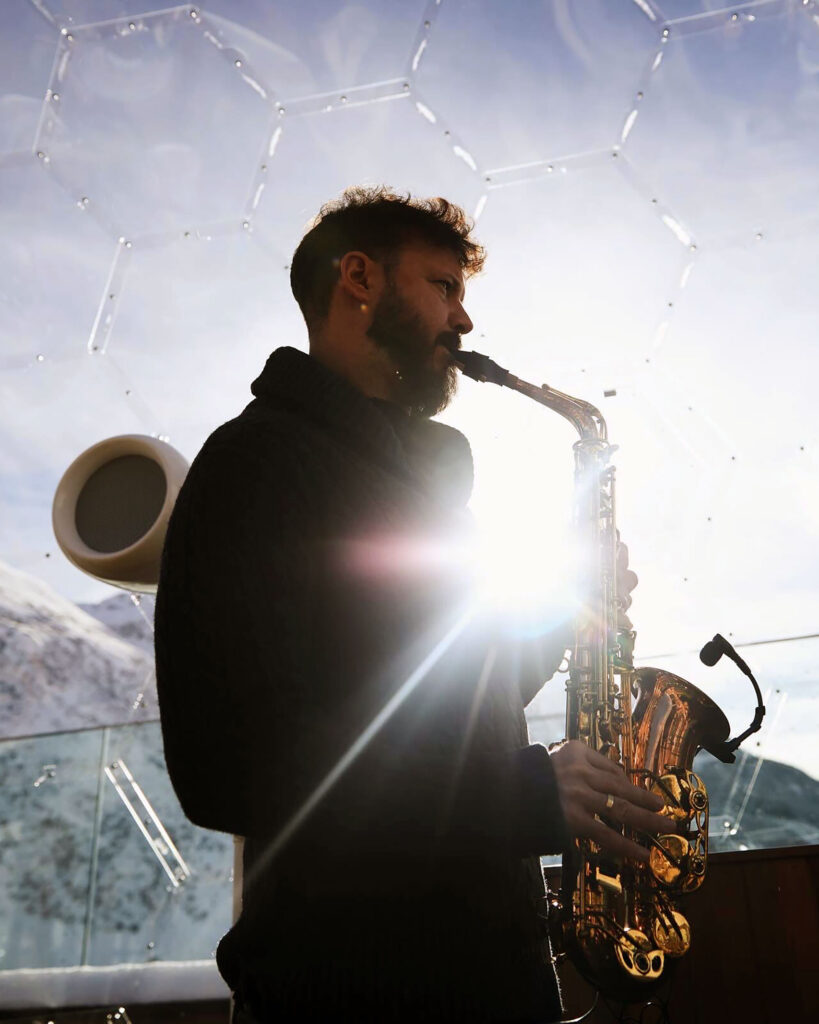
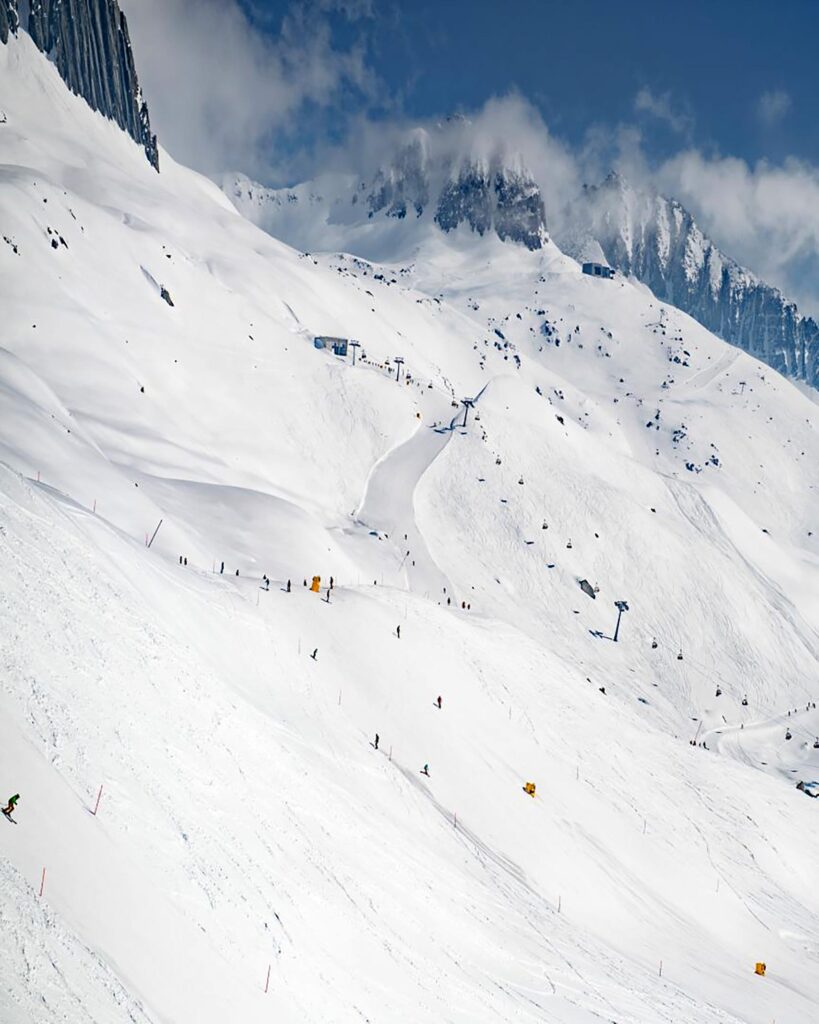
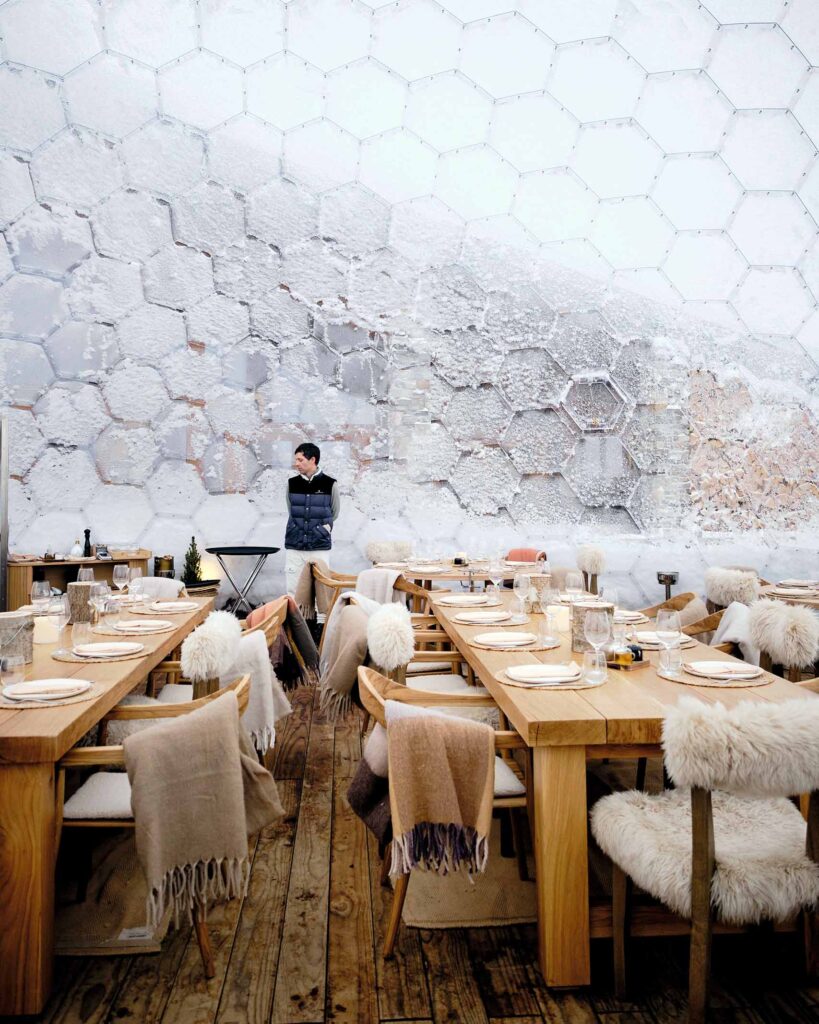
Passionate skiers, the Marstranders were eager to add an Alpine outpost to their flourishing Cotton Lifestyle brand and, as Christian explains, “Andermatt is unique in the Alps right now, in that it’s not owned exclusively by a small group of local families, but is very welcoming to international newcomers”. It’s a vital benefit for the Norwegians, whose daughter Emily and partner George, the Greek co-owner of an acclaimed restaurant on Zakynthos, are part of the multicultural Cotton team.
As a fan of Andermatt’s under-the-radar charms since its freeriding rough-diamond days, I was reassured to hear that even the new breed of visitors is still feeling – and loving – the adventurous, frontier-skiing vibe that first gave its mountains cult international status. “It was funky – I didn’t know if the trails were going to end up in a super-cute village or just take me off a cliff,” I overheard a skier from Seattle saying. Another transatlantic guest, Mandy from Chicago, also put the resort’s newly rarefied lifestyle – and often eye-watering Swiss prices – into an interesting perspective. “It was quicker for us to get here from Chicago than to reach our condo in Colorado. And it’s such good value here compared with home.”
That said, I was more than happy to be seduced by all that the new Andermatt has to offer. A four-hour Cotton Club lunch dissolved boozily into table-top dancing with our fellow diners, who included a multinational group of friends hailing from Poland, Portugal and Brazil. Even in the tiny Fondue-Burg, a one-man restaurant in the hamlet of Hospental (six minutes’ drive from Andermatt), our host Sacha Ercolani explained that other guests that evening hailed from New York, Chicago and Colorado.
Welcome to Andermatt 2.0 – a place to share a bottle of Clase Azul tequila with new best friends from across the world in a Norwegian-owned, Mediterranean-inspired club that serves exceptional sushi, Thai curry and Peking lamb. As I danced my ski boots off to Abba beneath the Alpine sun, George delivered a fresh bucket of champagne and opened his arms for a bear hug. Stepping into his cashmere embrace, I realised I was also wrapping my arms around the Cotton Club strapline, ‘Andermatt is my home town’.
www.andermatt-sedrun-disentis.ch
Photography by Martin Wabel, Michael Adair, Valentin Luthiger and courtesy of the Cotton Club and The Chedi Andermatt


